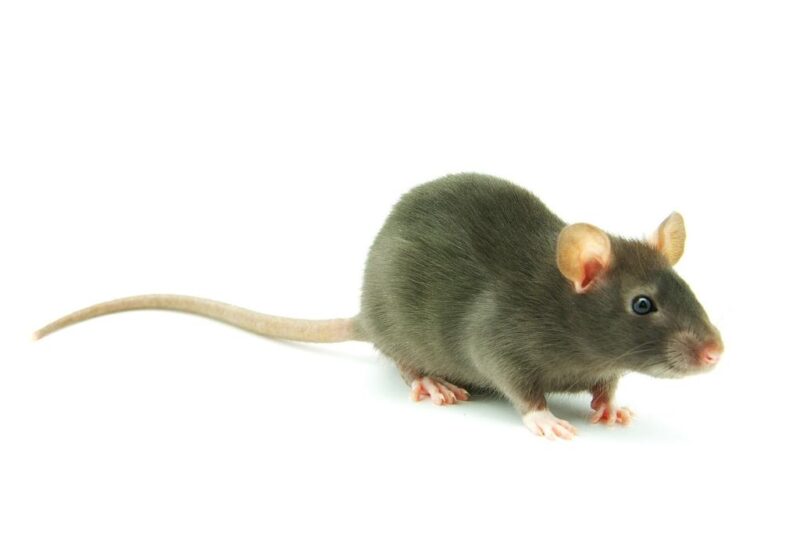Just like mice, rats are known to have thin, long tails. The hairless tail of rats makes them look creepier and scarier. But in case you don’t know, it is one of the most important parts of their body.
In fact, they have the same purposes as a cat’s tail. Just like cats, rats are warm-blooded animals and produce body heat.
Why do rats have tails? Rats have tails because it helps them regulate their body temperature due to their special blood vessels. This is very important to rats since their body is covered with hair and they don’t sweat. They also use their tails to keep balance, to help escape from predators, and to express feelings.
Rats can reduce their body temperature when the weather is hot. They can also reduce heat loss when the weather is cold. This special characteristic of rats is due to their long tail.
Aside from that, their tail has other important benefits for them. In this article, you will learn everything you need to know about a rat’s tail.
Table of Contents
What Is the Structure of a Rat’s Tail?
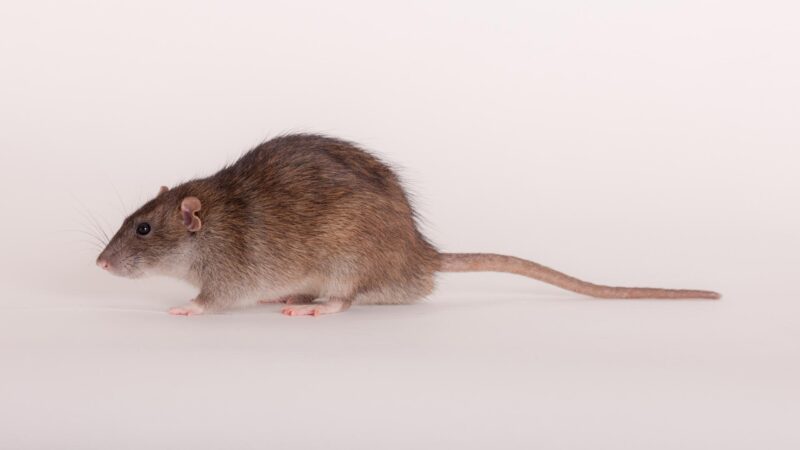
Like in other mammals, the rat’s tail is an extension of the animal’s vertebral column. Despite having a simple appearance, this long and cylindrical tail has a complex internal structure.
Technically, the tail has three concentric layers. The outermost layer is the skin layer, which is usually scaly and has no hair at all.
The middle layer is called tendons, along with one ventral artery, three small veins, a pair of lateral veins, and a dorsal vein. These veins are responsible for blood to flow within the tail.
The innermost layer is the vertebra (bone), which rats can move by controlling their tail muscles. The tail length depends on the rat species.
Why Is a Rat’s Tail So Long?
Rats usually have long tails because longer tails mean that the surface for heat loss is also bigger. They are also better for balancing than the shorter ones.
Rats with long tails are also more capable of controlling their movements and are better climbers. In short, a rat’s tail is long because they need it very badly.
Different rat species have different tail lengths. Also called brown rats, Norway rats are 12-18 inches long and their tail is 6-9 inches long. On the other hand, roof rats (also called black rats) are 12–14 inches long but their tail is significantly longer than their head and body combined. Norway rats are bigger than roof rats.
Why Are Rat Tails Hairless?
A rat’s tail has no hair because of two major reasons. Hairless tails are better than haired tails when it comes to heat dissipation. Since rats use their tails to help their bodies cool down, hair will act as an insulator and will hinder cooling their body temperature. Rats can also climb and run faster if their tail is hairless.
Are All Rats Born With Tails?
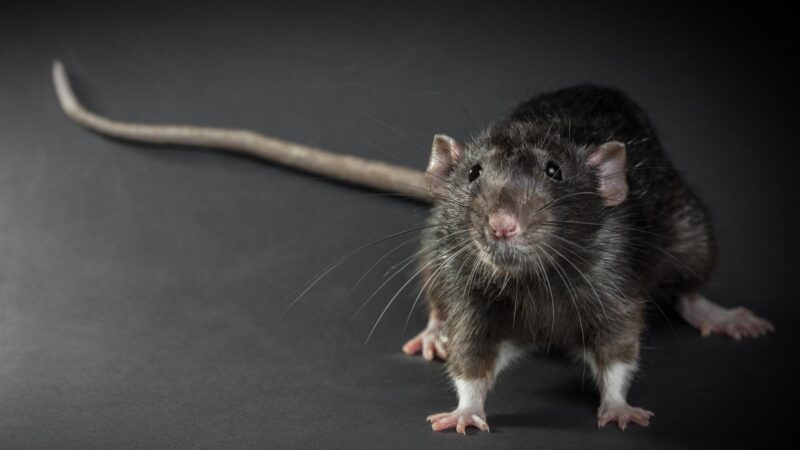
Not all rats are born with tails. Rats that are born without tails are simply called true tailless rats. Also called Manx rats or fancy rats, these tailless rats are born with no tail vertebrae due to a genetic mutation.
Instead, their behind has a cobby appearance or a distinct round end, which looks like a noticeable dimple.
Unknown to many, two scientific reports about these tailless rats have been released – in 1915 and 1917. Tailless rats are usually smaller than rats born with tails, and most of them are kept as pets.
Manx rats are very playful and outgoing but they are more prone to health problems as compared to tailed rats.
What Is the Purpose of a Rat’s Tail?
The tail is very important for rats and it has several purposes. First, rat tails serve as a thermoregulatory organs. This means that rats can regulate their body temperature by using their tail.
If rats feel very hot, they relax their tail to widen their blood vessels to enhance blood flow. This process is called vasodilation.
Once the rat’s blood on its tail surface loses heat, its body temperature will also reduce, and the rat will feel cold. If more blood flows through its tail, the rat will feel warmer.
If the body temperature of the rat drops, the veins on its tail will shrink, hence, the blood flow is restricted. This process is called vasoconstriction.
Interestingly, rats also use their tail as a balancing mechanism while they are walking, running, and climbing. If a rat is walking on a rope or cable, its center of gravity should always be directly above it.
But if it moves its body slightly to the left or right, the rat will rotate around the rope or will eventually fall due to gravity.
To avoid this, the rat will move its tail to one side to increase its rotational inertia. This will also allow the animal to adjust the center of gravity of its body to the exact position where it will not rotate or fall.
This scenario can be compared to a circus performer walking on an elevated cable and holding a very long stick.
Rats also use their tails as their “third leg.” This is when they stand at the edge of a bowl with their hind legs while holding food using their front legs.
If the bowl is not too high, the rats will curl their tails to balance their body so they won’t fall. But if the bowl is high, they will point their tails straight until it touches the ground.
Interestingly, rats can communicate or express their emotions using their tails. Like cats, rats may wag their tails when they are excited or feeling tense. They may swing their tails aggressively during a confrontation with another rat or if a predator is approaching. Tail wagging may involve only the tip or the whole tail.
What Happens if You Cut a Rat’s Tail?
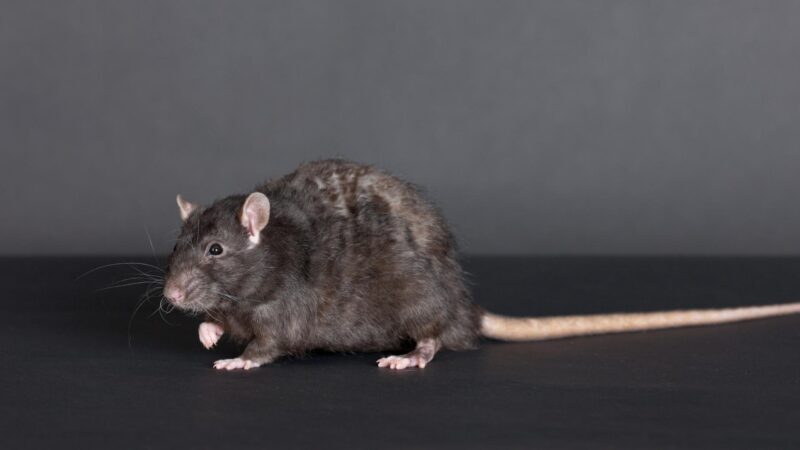
The process of cutting off a rat’s tail is called docking and is considered unethical and inhumane. Once you cut the tail of a rat, it will affect the rat’s health and daily activities.
Unlike tailless rats, they will still have a stub on the area where their tail is supposed to grow. Rats with short tails usually end up having health problems.
Cutting a rat’s tail is usually being done by pet store owners and breeders who want to sell “tailless rats”. On the other hand, biologists perform this practice for genetic analysis, and they follow specific rules and requirements.
Therefore, you should not do it to your pet rats without proper guidance from professionals.
Why Do Rats Tails Fall Off?
The tail of a rat is very sensitive and can easily be cut or removed. A rat’s tail may fall off once a predator grabs it close to its end and the rat will pull it hard enough.
If you decide to pick up a rat by its tail and hang it upside down, the animal will be in pain. Its tail will eventually fall off and the rat will run away.
Will a Rat Chew Its Tail Off?
A rat may chew its tail off if it is giving the animal so much pain. This can happen when a rat’s tail is caught by a sticky trap as the animal tries to escape.
Male rats will also chew their tail off if it gets wounded after a fight against another male. Severe tail biting will cause blood loss, which can lead to death.
Can Rats Live Without a Tail?

Rats can still survive without a tail but not for long, whether they are in the wild or indoors. As mentioned above, rats use their tail for balancing when they are running on cables or ropes.
If rats have no tails, they are prone to accidents and can hardly escape from predators and people who want to catch them.
Rats also use their tails to regulate their body temperature. Rats without a tail will take longer to cool their bodies than those with a tail.
Once rats are unable to lose their body heat effectively, they will be prone to some health issues such as heat stroke and may soon die. This is also why cutting their tail is not advisable.
Can You Grab a Rat by the Tail?
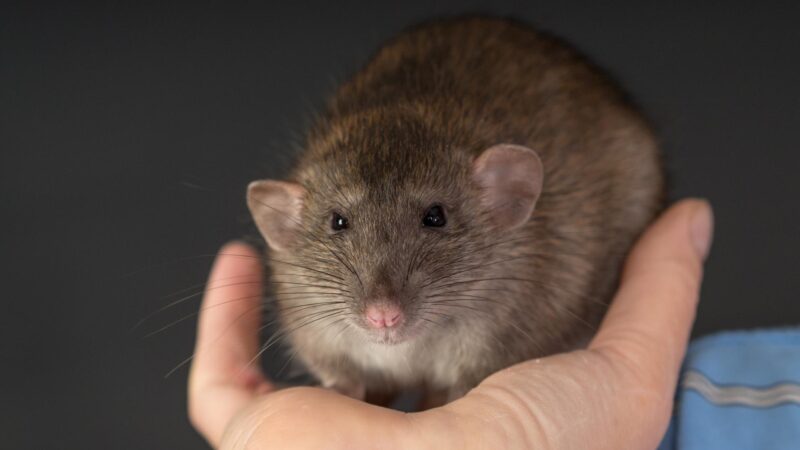
You can grab a rat by its tail but with extra caution. If the rat is your pet, carefully grab its tail on the base. Grabbing the tail on its end may cause the tail skin to be stripped off.
In a worst-case scenario, your pet rat may lose its precious tail. If the rat is a household pest, it will try to bite you once you grab its tail.
When Does a Rat’s Tail Grow?

Generally speaking, rats already have a tail even before they are born or still inside their mother’s womb. If a rat was born with a tail, the tail will slowly grow longer as the rat continues to grow.
Unlike lizards and salamanders, rats cannot regenerate their tails. Hence, a rat’s tail that has been cut will never grow again.
How Does the Rat’s Tail Help Against Predators?
With their tails, rats find it easier to balance their bodies while walking on ropes or very narrow surfaces. Without proper balancing, rats can hardly run fast to escape from predators such as snakes and birds of prey, including eagles and falcons. Indoors, tailless rats can easily be captured by humans, dogs, and cats.
Rats can also help protect themselves against their predators by distracting or tricking them with their tails. When a rat moves its tail while escaping, predators are very likely to grab it instead of the rat’s body. The rat’s tail may get injured or be partially cut during the chase but the rat can still escape and survive long.
Summary
Rats with tails are enjoying their lives more than tailless rats. Their tails help them a lot in surviving during extreme weather conditions. No wonder, they can breed throughout the year. This is good news for pet rat owners but not for homeowners who are encountering a rat infestation, especially during summer.
List of Sources
Rats and Mice. Indiana Department of Health.
Kern, W. H. (2018). Control of roof rats in fruit trees. University of Florida.
Timm, R. M., Salmon, T. P., Marsh, R. E. (2011). Rats. University of California Agriculture & Natural Resources.
